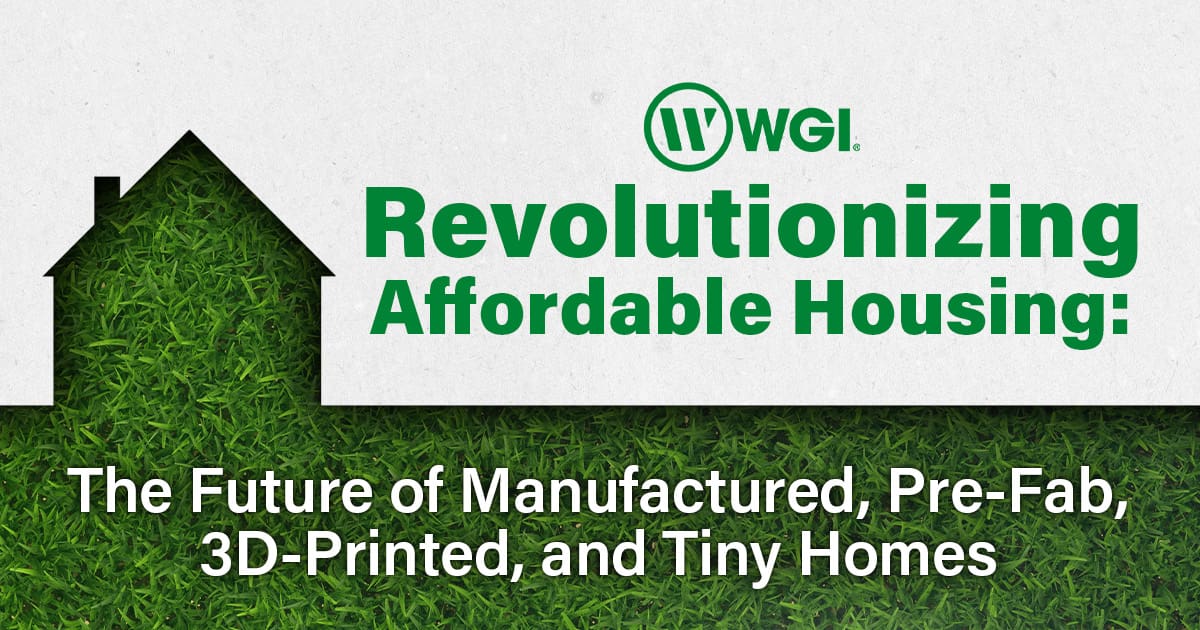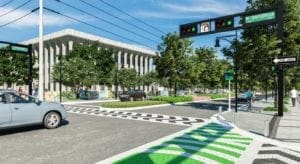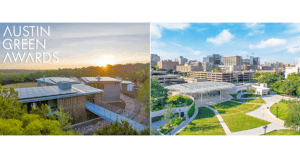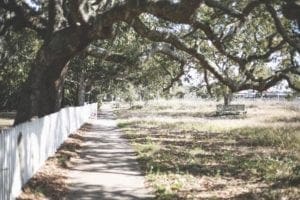
Welcome to “YES Week” – A Week Celebrating Our Associates’ Years of Exceptional Service
YES Week is about celebrating all associates by honoring their efforts, passion and devotion towards WGI’s continued success.
Learn from award-winning professionals — explore our whitepapers, blogs, and the latest industry updates.
Join our dynamic organization of engineers, land surveyors, landscape architects, environmental scientists, and architects!
Talk to a market leader today! We’ll answer any questions you have about our professional services.

The 2008 recession and the COVID-19 pandemic of 2020 brought about significant challenges in the housing market, and even now, many potential homebuyers and property renters face limited financing options. In response, developers have been exploring innovative ways to provide affordable housing options.
One of the most promising avenues is through the use of manufactured, pre-fab, 3D-printed, and tiny homes. These approaches not only reduce costs but also allow for quicker construction and increased flexibility in design.
The Need for Affordable Housing in Austin, Texas
As the cost of traditional housing continues to rise, many individuals and families find themselves priced out of the market.
In cities like Austin, TX, where the cost of living has consistently grown over the last few years, finding affordable housing can be especially challenging. However, developments like the Community First Village and ICON’s 3D-printed homes are changing the landscape of affordable housing in the area, providing options for more ultra-affordable and accessible alternatives to conventional housing types.
Community First Village
Community First Village, located on 51 acres in northeast Travis County, provides permanent housing and a supportive community for individuals coming out of chronic homelessness. Developed by Mobile Loaves & Fishes, this transformative residential program not only offers housing but also empowers the surrounding community to engage in service with the homeless, including on-site job opportunities and supportive services.
Currently home to more than 370 formerly homeless individuals, Community First Village is expanding to accommodate over 500 individuals who once struggled to survive on the streets of Austin. By providing affordable housing in a supportive community environment, Community First Village is changing lives and addressing the pressing need for housing options in the area to lift people up out of homelessness, while also creating a meaningful and fulfilling experience.
ICON 3D Printed Homes
In 2018, ICON, in partnership with housing non-profit New Story, delivered the world’s first permitted 3D-printed home during SXSW in Austin, TX. Since then, ICON has continued to innovate in the affordable housing space, 3D-printing more than 140 homes and structures across the United States and Mexico.
ICON’s latest advancements include a suite of technologies designed to further automate construction. This includes a new robotic printer capable of multi-story construction, a low-carbon building material, a digital catalog for residential architecture, and an AI Architect for home design and construction. These technologies make construction faster, more sustainable, and more affordable, revolutionizing the way affordable housing is built around the world.
The Benefits of Manufactured, Pre-fab, 3D-Printed, and Tiny Homes
Designing and Permitting Affordable Housing Developments
When it comes to designing and permitting affordable housing developments, there are several considerations to keep in mind, especially when developing on a single legal lot.
Contact Our Team
Manufactured, pre-fab, 3D-printed, and tiny homes offer a promising solution to the affordable housing crisis. By leveraging innovative construction methods and design techniques, developers can provide high-quality, affordable housing options for individuals and families in need. Projects like Community First Village and ICON’s 3D-printed homes in Austin, Texas, are leading the way in revolutionizing affordable housing and providing hope for the future. With continued innovation and collaboration, we can create communities where everyone has access to safe, affordable housing.
At WGI, we’re revolutionizing affordable housing with our advanced manufactured, prefab, 3D-printed, and tiny home-building techniques. Our expertise empowers developers to create sustainable, innovative, and accessible multifamily complexes and personal residences – Contact our team today to learn about WGI’s commitment to transforming housing markets by delivering cost-effective, forward-thinking living solutions for diverse community needs!

WGI is a national design and professional services firm leading in technology-based solutions for the construction of public infrastructure and real estate development. At WGI, we’re providing Tomorrow’s Infrastructure Solutions Today.

YES Week is about celebrating all associates by honoring their efforts, passion and devotion towards WGI’s continued success.

Discover the 3D design software breakthroughs that are enabling designers to accomplish things that CAD users could only dream about.

The Austin Green Awards recognize and promote sustainability and design innovation in Austin.

When designing a site within the City of Austin, special consideration must be made when designing fire lanes.

While traditional Transit Oriented Developments (TODs) have been used to create more efficient transportation networks in urban areas, they don’t always take into account the needs of existing residents or businesses. That’s why it’s time to say hello to Equitable Transit Oriented Development (ETODs) & their focus on the ‘people’ aspect of development.

The urban forest has social, ecological, economic, historical, and aesthetic benefits for the citizens of Austin. Learn about the Heritage Tree Ordinance and how it may affect your next development project.
You’ve been searching for a place like WGI. We look forward to meeting you soon.
Sign up to receive emails to hear our latest news and achievements in our monthly newsletter.
Enter your zip code, and we’ll personalize your experience with local projects, office locations, team members, and more.
WGI supports its associates with meaningful opportunities for growth, strong benefits and perks, while we work collaboratively with clients and co-consultants to shape and improve communities.






WGI is a dynamic organization with opportunities nationwide for engineers, land surveyors, landscape architects, environmental scientists, and architects.